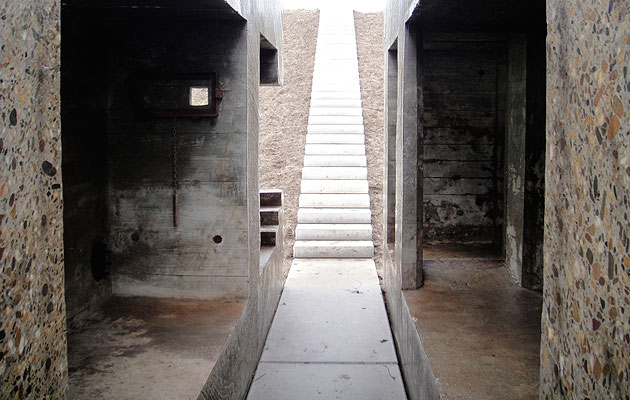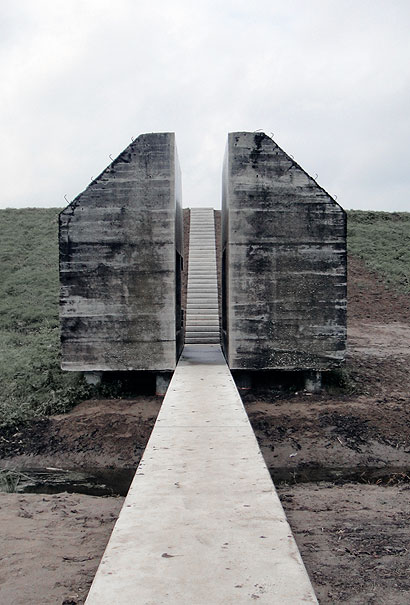|
|
||
|
The Dutch landscape – that “sea of land” – is a kind of machine for living: without its intensely engineered system of dikes, polders, dunes, weirs and so on, most of the country would be inundated by the North Sea. That fragile balance, however, has also been a curious source of strength – not against the sea, but foreign encroachment. Beginning in the 16th century with the 80 Years’ War against Spain, the Dutch have employed a system of hydrological defence – known as the Dutch Water Line – involving strategic flooding of low-lying polders. Used sporadically in the following centuries, it received a major upgrade beginning in 1815 with the construction of the 85km Nieuwe Hollandse Waterlinie. As Koos Bosma writes in Atlas of the New Dutch Water Defence Line (010 Publishers, 2009), the line was more than a military bulwark, it was “an early form of regional planning” that had enormous consequences for the look of the landscape. Despite advances in aerial warfare that rendered ground defences less relevant, the Dutch Water Line was remarkably long lived, employed all the way into the Second World War, when it was augmented with more than 700 bomb-resistant bunkers. For decades, these have sat dormant, dotting the Dutch countryside. Recently, the Amsterdam-based firm of Rietveld Landscape (working with the artist Erick de Lyon), in an effort to draw attention to the bunkers, took one of the structures – Bunker 599, just off the A2 highway near the town of Diefdijk – and sliced it in two, constructing a walkway between its two halves. “We were really fascinated by the fact that there were so many of these things,” Ronald Rietveld tells me, in his office on the Westerdok. “Stone knights,” he calls them. “They are just there, they are waiting for something.” The firm, whose well-regarded exhibit at the Venice Biennale, Vacant NL, called attention to the surfeit of vacant real estate in the Netherlands, wanted to make the bunkers culturally accessible, to create a “public domain out of them”. Using a diamond-edged saw, it took a month to cut through the bunkers, steel-framed and with concrete walls several metres thick. The marks of the saw are visible on the interior walls (finished with epoxy), which Rietveld compares to a fossil. The gap between the bottom of the bunker and the landscape itself – a result of the fragile, subsiding Dutch ground – has been kept intact (“we wanted to show this phenomenon,” says Rietveld). Unlike other wartime sites marked by great human loss, the Dutch Water Line saw little battle action, which means “we can think more freely about it”, Rietveld says. “It makes it much lighter, and it’s quite easy to rethink this whole area into a new public space for the Netherlands.”
credit Atelier de Lyon/Rietveld Landscape |
Image Atelier de Lyon/Rietveld Landscape
Words Tom Vanderbilt |
|
|
||


















